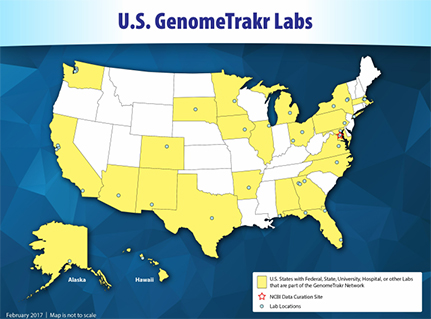
| Feb. 2017 | |||||||||||
| Top stories | |||||||||||
| In the news | |||||||||||
| Photos | |||||||||||
| Contact us | |||||||||||
| Archive | |||||||||||
|
‘Trakr’ labs identify foodborne pathogens |
Feb. 28, 2017 --
When a criminal forensic scientist runs DNA evidence through the Combined DNA Index System (CODIS), they may be using the FBI’s database to identify an offender. When a food scientist runs DNA through GenomeTrakr, they are trying to match the DNA fingerprint of a pathogen with that in contaminated food.

GenomeTrakr is a database that helps identify harmful microbes through an international network of laboratories. These laboratories use whole genome sequencing to identify foodborne pathogens that can cause illnesses. The data is stored at the National Center for Biotechnology Information of the Federal Drug Administration.
The State Hygienic Laboratory is one of 25 state health and university labs that are members of the GenomeTrakr program. Others include 15 federal government labs, three other laboratories in the U.S. and 20 labs outside of the U.S. GenomeTrakr also works with independent academic researchers.
Salmonella and Listeria pathogen isolates were the first to be tested and included in the GenomeTrakr database. Other foodborne pathogens – including E.coli, Campylobacter and Vibrio – have been added to the database as labs increasingly use whole genome sequencing to identify their isolates.
Through its GenomeTrakr program, the FDA encourages the use of environmental isolates from food, water and food manufacturing facilities in the fight against foodborne illnesses.
This FDA work was highlighted last December when President Obama praised the improving detection and tracing of foodborne outbreaks because GenomeTrakr “promises to speed foodborne illness outbreak investigations, and reduce foodborne illnesses and deaths.”